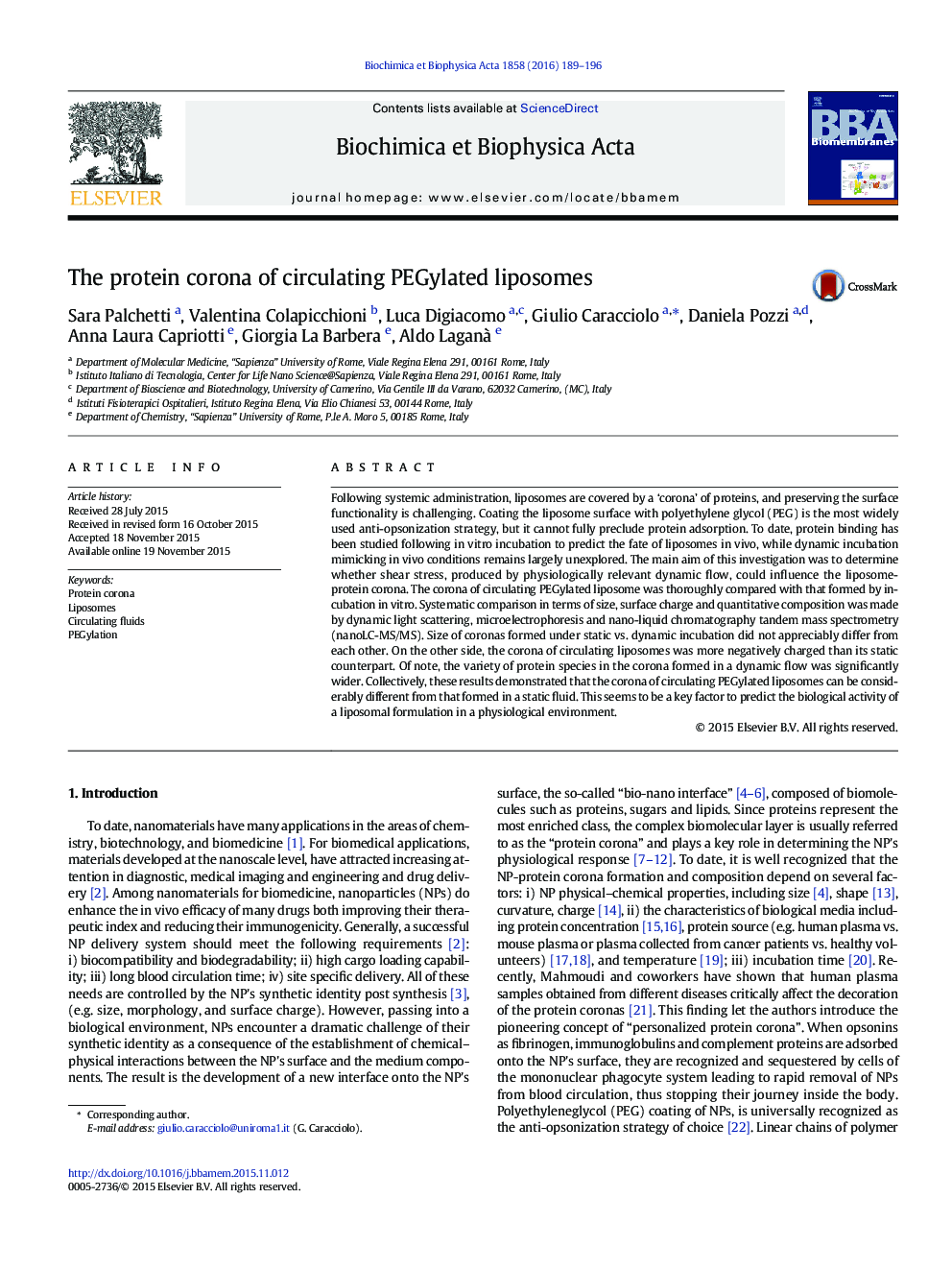| Article ID | Journal | Published Year | Pages | File Type |
|---|---|---|---|---|
| 1943925 | Biochimica et Biophysica Acta (BBA) - Biomembranes | 2016 | 8 Pages |
•Liposomes PEGylation reduces the interaction with serum proteins.•Liposome PEGylation cannot fully prevent protein adsorption.•Shear stress influences the corona of PEGylated liposomes.•The corona of circulating liposomes cannot be predicted by in vitro incubation.
Following systemic administration, liposomes are covered by a ‘corona’ of proteins, and preserving the surface functionality is challenging. Coating the liposome surface with polyethylene glycol (PEG) is the most widely used anti-opsonization strategy, but it cannot fully preclude protein adsorption. To date, protein binding has been studied following in vitro incubation to predict the fate of liposomes in vivo, while dynamic incubation mimicking in vivo conditions remains largely unexplored. The main aim of this investigation was to determine whether shear stress, produced by physiologically relevant dynamic flow, could influence the liposome-protein corona. The corona of circulating PEGylated liposome was thoroughly compared with that formed by incubation in vitro. Systematic comparison in terms of size, surface charge and quantitative composition was made by dynamic light scattering, microelectrophoresis and nano-liquid chromatography tandem mass spectrometry (nanoLC-MS/MS). Size of coronas formed under static vs. dynamic incubation did not appreciably differ from each other. On the other side, the corona of circulating liposomes was more negatively charged than its static counterpart. Of note, the variety of protein species in the corona formed in a dynamic flow was significantly wider. Collectively, these results demonstrated that the corona of circulating PEGylated liposomes can be considerably different from that formed in a static fluid. This seems to be a key factor to predict the biological activity of a liposomal formulation in a physiological environment.
Graphical abstractFigure optionsDownload full-size imageDownload high-quality image (205 K)Download as PowerPoint slide
